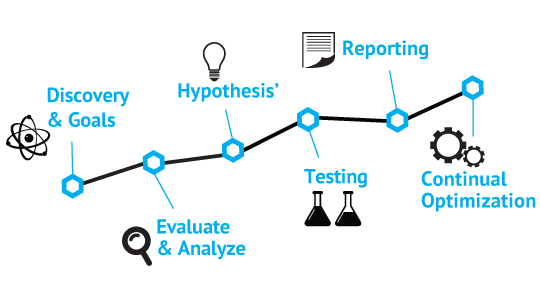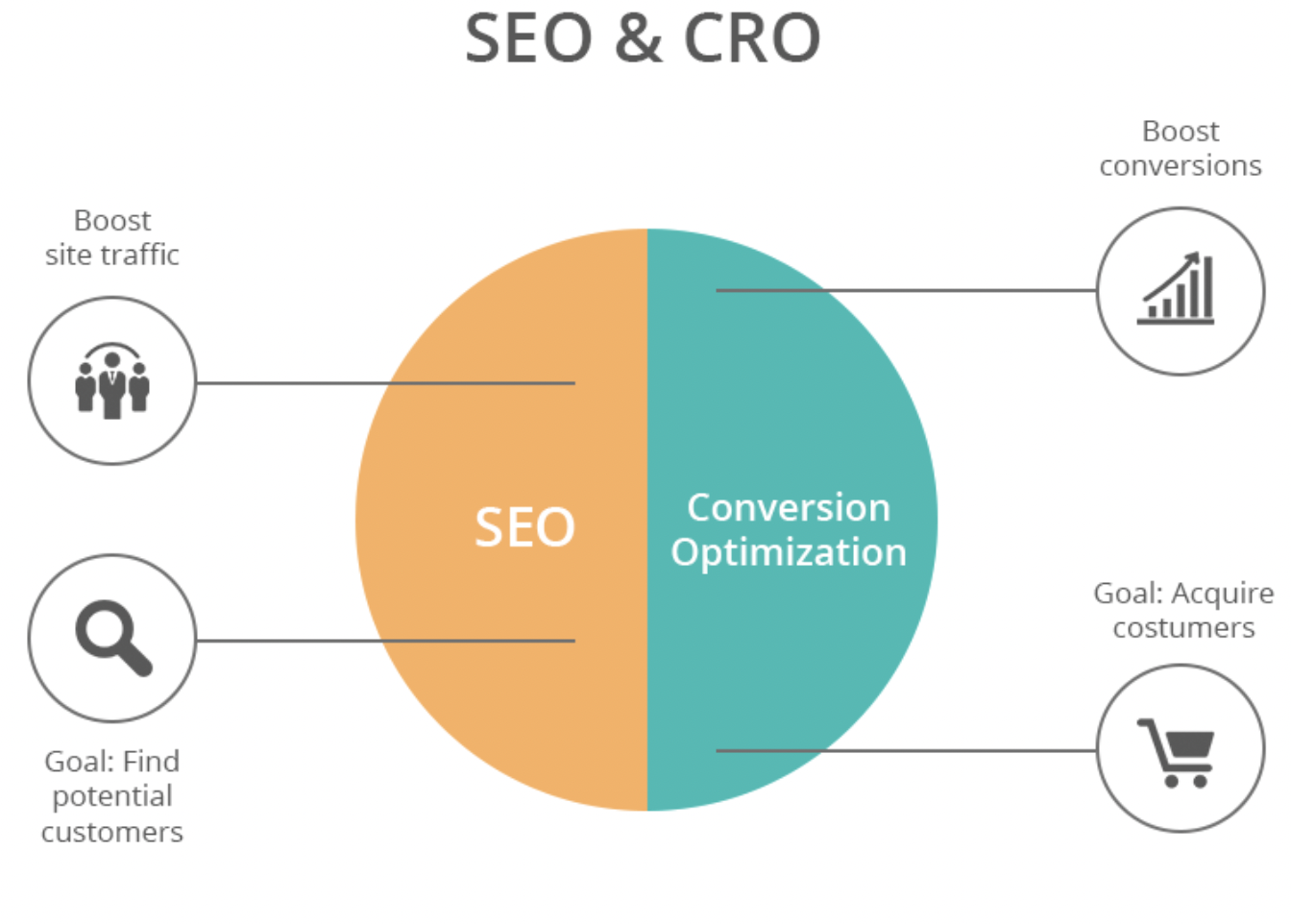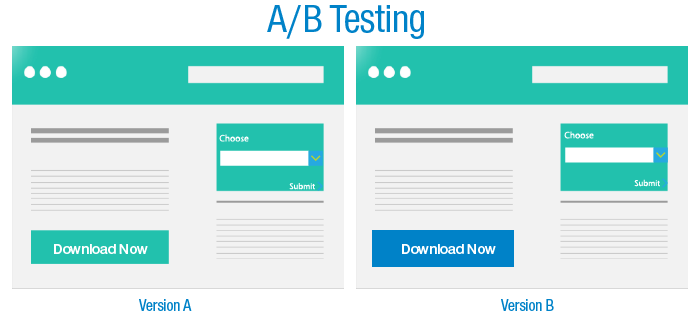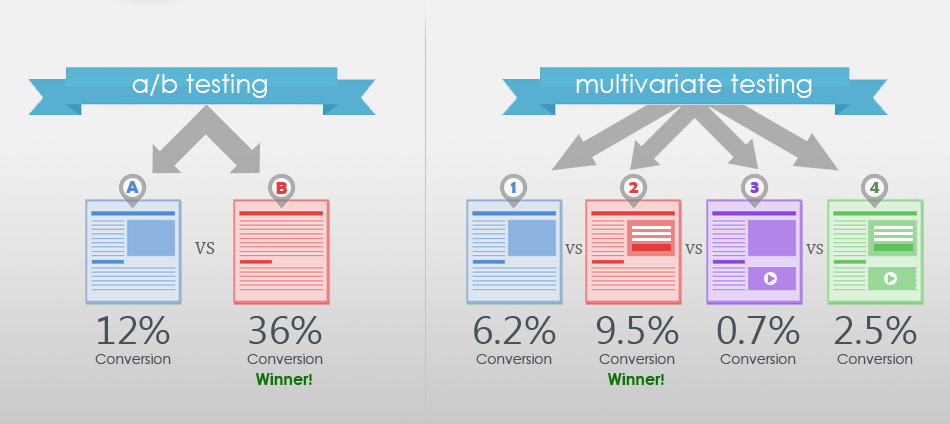Every time your PPC ads increase the number of visitors to your landing pages, a celebratory bell goes off. Ding ding ding.
But are those delightful dings donging too soon?
Possibly.
An increase in traffic doesn’t guarantee a conversion.
And without conversions, you won’t see a healthy Return On Ad Spend (ROAS). Negative ROAS means you’re forking out more money than you’re making. The bell is not bonging.
In the pay-to-play PPC world, putting money down on ads is only the first part of the conversion equation.
Ads bring in traffic.
But then what?
Then the magic happens.
That magic is done by you and it’s called Conversion Rate Optimization (CRO).
The first part of CRO gets traffic to your page either from an ad or organically (with SEO). The last part of the conversion equation is what you do to engage people once they land on your landing page (CRO).
Get CRO marketing wrong and website visitors leave without doing the one thing you hoped they would—click your CTA button.
Maybe that button was to book a free demo or download a freebie or subscribe to a webinar or purchase your product (eCommerce checkout).
But if they leave, they don’t do any of those things.
They don’t take your desired action.
See all those dollar bills floating in the air? You don’t get them.
Instead, you get a high bounce rate and your budget gets a kick to the crotch.
No conversion means you’ve spent money to get them there but you didn’t make any money from them being there. Spitty trumpets.
It’s a great big important deal to get website traffic clicking your buttons.
This is where CRO comes in.
Smart PPC + clever CRO = positive ROAS
Get brand new conversion strategies straight to your inbox every week. 23,739 people already are!
Why is CRO the most important part?
Of the myriad acronyms in the PPC world, CRO isn’t somewhat important—it’s the most important.
If no one clicks on your ad, that’s bad, but you’re not out any greenbacks. You’re only out a bunch of time and a few ego bumps. But if your ad is good enough to get clicked and your end game is poop, you’ve just blown money on your CTR (click-through rate) with nothing to show for it.
That’s like bringing home the freshest organic ingredients from the farmer’s market, then tossing everything in a pot and boiling those crisp veggies to slop.
And then burning that slop to the bottom.
CRO is about learning how to steam those veggies so they keep all that fresh goodness and get devoured when you serve them on a white platter with simple presentation.
Conversion rate optimization shows off your stuff in a way that increases the percentage of your traffic that converts.
“Converting” means that the visitor takes the action you’ve flagged as the most valuable action on your page.
For example:
- Get a free proposal
- Sign up for X service
- Schedule a demo
- Download our app
CRO tactics feed into the overall CRO strategy.
Let’s cover the basics first—walking before we take off sprinting.
What is Conversion Rate Optimization (CRO)?
CRO works hard to move visitors from ad clicks and search engine clicks to landing page clicks (not homepage clicks or product page clicks). It measures the percentage of people who complete that path.
This happens when you improve the user experience (usability) on the landing page and guide your visitors toward a single action.
CRO is meant to improve the ROAS of your ad campaigns as a whole, turning potential customers into paying customers. Once that happens, it’s up to your sales team to delight those customers so they stick around and sing your praises (social proof) which feeds back into the CRO machine.

CRO best practices improve the percentage of traffic that successfully converts without increasing your ad spend.
That’s how you boost your ROAS.
Types of optimization: SEO vs. CRO
Here’s another acronym ending with “O” for optimization.
SEO stands for Search Engine Optimization. You use SEO to impress Google search engine crawlers so Google sends more traffic to your landing page organically (free of ad spend).
CRO takes over from there, impressing prospects enough to turn them into purchasers. And by “impress” I mean that you deliver on what your ad promised in your value proposition (the copywriting at the top of your landing page).

CRO guides how you set up your landing page. It also tests the tweaks you make on your landing pages to see what impresses users the most. With CRO, you measure what experiences are working as people engage with your brand.
Macro- vs micro-conversions
Website conversions fall into one of two categories:
- Micro-conversions (microscope)
- Macro-conversions (telescope)
Micro-conversions are the smaller conversions that lead a user toward your macro-conversions. Things like
- signing up for email lists
- creating an account
- adding a product to the cart
Macro-conversions are the main conversion goals you want your user to hit. Things like
- purchasing a product from the site
- requesting a quote
- signing up subscribers for your service
CRO basics: the form
Consider user psychology on your page when designing your conversion form. You want to get your foot in the door, not scare away could-be-converters.
How you do that is by following the Breadcrumb Technique.
This technique carefully nudges prospects into your conversion funnel by using a multi-stage form.
But (you ask yourself subliminally), aren’t forms supposed to be short and not ask too much of the prospect?
Nope.
You’ve been told that, but asking more questions, not less, is how you double your conversions.
Moving on.
Let’s see how the pros do CRO.
CRO methodology
Traffic comes from disparate sources and some marketers think it’s next to impossible to capture different user intent with one global conversion strategy.
But that is hogwarsh.
At KlientBoost, we like to eat impossible for breakfast.
Not really. We’re just smart about our CRO—we skillfully mix creativity with analytics.
Our CRO recipe looks like this:
- Stir CRO best practices and a healthy dollop of creativity together in a bowl.
- Pop that concoction in the oven and WATCH IT CONSTANTLY so it doesn’t burn (analytic diligence).
- Stick a toothpick in it (test it).
- If it needs more time, pop it back in the oven.
- And if people can’t keep their hands off your goodies, bake more goodies.
Let’s talk about the toothpick part (testing it).
A/B Testing (Split Testing)
Classic CRO is A/B Testing.
This is also known as split testing, because you isolate one variable, creating an A version and a B version (split variants). Then you compare their performance in a controlled setting.
This test can be as simple as changing the color of a button.

Because you isolate ONE variable (such as button color, hero image, etc…), you confidently attribute that one change to the increase (or decrease) in the number of conversions.
NOTE: Any tests you run must reach statistical significance before making any big decisions based on “winners” and “losers.”
Your winning variant then becomes the new control for you to test other CRO implementations on in future A/B tests.
Multi-Variable Testing
Multi-variable testing (also called multivariate testing) expands split testing to the landing page as a whole. It doesn’t isolate one variable; it measures changes to multiple variables like button color, button text, hero image, etc.
Multivariate testing is more like A/B/C/D testing.

Multi-variable testing takes less time than a long list of singular A/B tests because you can test the interactive effects of your different landing page components.
Though faster, keep in mind that it takes a bit longer to reach statistical significance when you’re running multi-variable testing.
Data versus human-driven testing
Clear tracking and accurate data makes it easy to see what CRO tests are winners or losers.
But as you gather quantitative data (metrics), don’t ignore the qualitative side of things (the human element)—because your ad campaigns work on real humans.
On top of the quantitative science (the what), your landing page should be approachable, casual, and personal (the qualitative why).
What: the quantitative data
- On what element did your webpage visitors convert?
- What ad did users click-through (CTR) to reach the landing page?
- What device did they use when they converted?
- What did the user demographics (interests, etc) look like?
Why: the qualitative data
- Why did the user choose your brand specifically?
- Why did the user engage with your content?
- Why did the user click your button?
CRO experts blend both data types to inform their implementation ideas.
You should do the same.
Trust the results of the tests you run but understand that, in the end, it’s your humanized creativity that gets that click.
Measuring CRO success
To clearly measure wins and losses, set a baseline before launching your test. Identify what metrics and KPIs you’ll track beforehand to avoid blind optimization.
Blind optimization is when you optimize your landing page for the wrong metrics (like vanity metrics, bidding only on branded keywords, over-optimizing your long tail keywords, etc.).
Blindly optimizing is a waste of resources and money.
So take your time to make sure that you have all your ducks in a row before you dive into any CRO test.
CRO tips from the pros
1. grab the low hanging fruit first
Three-pointers are swell, but take the easy layup first.
Easy wins are smart wins when it comes to increasing your ROAS (the money you make from the money you put into ads).
Easy wins stack up and, as you continue to accrue a higher and higher ROAS, you’ll have more room to test more advanced, more time-consuming CRO implementations to see if you can increase conversions.
Move the needle a little bit a bunch of times and then work toward the more nuanced and impressive tests—scrape the barrel for every conversion you can get.
2. social proof
You have seconds to convince someone to click your button. One of the best ways to do that is to take away doubt. And one of the best ways to take away doubt is with first hand accounts from your already-happy customers. Testimonials, social media reviews, Clutch reviews, industry associations, and links to case studies communicate the dependable strength of your brand.
3. heatmaps
If you can’t figure out what the heck you’re doing wrong, use a visual CRO tool called a heatmap. We talk about heatmaps here but, in a nutshell, you can see what your visitors are doing on your page (and that might tell you why they’re not doing what you want them to).
Propitious PPC performance depends on careful CRO
If you ignore CRO, you’ll pay for traffic that lands on your lackluster landing page and leaves—because your landing page lacks luster.
Paying for anything that doesn’t work is dumb. And reporting those expensive stats to your manager doesn’t feel glamorous.
So give those visitors incredible value.
Get them to your page with a great ad or some stellar SEO, and then wow them with your clever CRO handywork. Making a conversion means bringing in visitors who
- want your stuff when they click on your ad, and
- are convinced beyond a doubt that they need your stuff when they land on your site because you promise to solve their pain point.
If you get part one right without part two, your budget bursts into tears.
PPC performance depends on landing page CRO that takes the traffic you’ve paid for and makes your money back.
At KlientBoost, we treat CRO with love and tenderness so that our clients print money like the Federal Reserve.
Hefty claim, we know.
But the average result from our 200+ case studies works out to about a 63% ROI increase in the first three months.
To get you there, we start with a free marketing plan (go ahead and click that red button at the bottom of the page)—that’s our conversion button.
Not sure?
We have more published conversion wins than any other agency and 600+ 5-star reviews to back up our bragging.
Plus, you can take our ideas, even if we don't work together—that’s how we address your objections. 😉
Take the tips in this post to focus your marketing efforts and start converting like a champ. Or, turbocharge your CRO with a free KlientBoost digital marketing strategy.
Either way, you win.
Now go ahead and ding that beautiful cowbell, Delilah, and let’s make more money.
